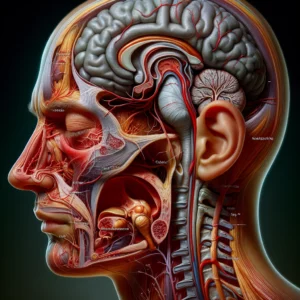Comprehensive Guide to Understanding Headache Causes and Proven Management Strategies
Headaches are a prevalent health concern that can drastically affect your everyday life, diminishing your ability to concentrate, work efficiently, and enjoy recreational activities. These painful episodes can take various forms, each with distinct triggers and symptoms that require careful attention. To effectively address headaches, it is essential to develop a thorough understanding of the different types of headaches and their specific characteristics. This foundational knowledge equips individuals to create personalized management strategies tailored to their unique experiences and requirements, ultimately leading to more effective and targeted responses to this common health issue.
Whether you experience sporadic headaches or persistent chronic pain, identifying the root causes is vital for seeking appropriate treatments and making beneficial lifestyle adjustments. As you explore the complexities of headache management, consider various treatment modalities that span both conventional and alternative approaches. Options such as balanced acupuncture, neurological acupuncture, and manual therapy can effectively alleviate discomfort by targeting the underlying issues, empowering you to take charge of your health and enhance your overall well-being.
By evaluating these diverse treatment options, you can embark on a holistic journey focused on not only relieving headaches but also improving your general health and vitality.
Key Strategies for Successfully Managing Headaches
- Tension headaches are the most common type, characterized by a persistent, band-like sensation around the head, which often worsens during stressful situations.
- Migraine headaches manifest as intense, pulsating pain, typically accompanied by nausea, vomiting, and increased sensitivity to light and sound, severely disrupting daily activities.
- Cluster headaches are infamous for their extreme pain, occurring in cyclical patterns and usually centered around one eye, making them some of the most intense headache types.
- Sinus headaches stem from sinusitis, resulting in pressure and pain in the forehead, cheeks, and nasal passages, often exacerbated by allergies or infections.
- Hormonal headaches, frequently affecting women, are linked to hormonal fluctuations and can arise during menstruation, pregnancy, or menopause, necessitating specialized management techniques.
 In-Depth Analysis of Tension Headaches: Understanding Triggers and Patterns
In-Depth Analysis of Tension Headaches: Understanding Triggers and Patterns
Identifying Common Triggers and Patterns Associated with Tension Headaches
Reflecting on your own experiences can reveal specific patterns that may trigger tension headaches. Factors such as extended periods of desk work, emotional strain, or poorly designed workspaces can significantly contribute to the onset of these headaches. Recognizing these triggers is essential for preventing future occurrences and maintaining your health. Common triggers include workplace stress, lack of adequate sleep, and even dehydration, all of which can intensify discomfort. Keeping a comprehensive headache diary can help you monitor the timing and circumstances surrounding these headaches, enabling you to take proactive steps to reduce their impact on your daily life.
Adopting a Holistic Strategy for Effective Relief from Tension Headaches
A well-rounded, multifaceted approach is often the most effective way to alleviate tension headaches. Integrating therapies such as balanced acupuncture can restore energy flow throughout your body by targeting specific acupoints associated with muscle tightness and stress. Additionally, incorporating relaxation methods—such as deep breathing techniques or yoga—can significantly reduce tension while promoting overall health. By addressing both physical and emotional stressors through a comprehensive approach, you can substantially decrease the frequency and intensity of tension headaches, ultimately enhancing your quality of life.
Maximizing Relief Through Neurological Acupuncture and Manual Therapy Techniques
Neurological acupuncture can further enhance your efforts to achieve relief by focusing on the nervous system’s role in pain perception. This specialized technique targets the pathways involved in headache formation, potentially altering your brain’s responses to pain signals. When combined with manual therapy techniques, such as massage or myofascial release, you may experience significant relief from the muscle tension that often exacerbates headaches. Together, these therapies create a synergistic effect, alleviating pain while promoting lasting relaxation and improved overall well-being.
 Comprehensive Overview of Migraine Headaches: Understanding Triggers and Management
Comprehensive Overview of Migraine Headaches: Understanding Triggers and Management
Migraines are far more than just intense headaches; they represent complex neurological events that can incapacitate you for hours or even days. Characterized by debilitating, throbbing pain usually felt on one side of the head, migraines may also come with symptoms such as nausea, vomiting, and heightened sensitivity to light and sound. A variety of triggers—including specific foods, hormonal changes, and environmental factors—can initiate these debilitating episodes, highlighting the importance of recognizing and managing these triggers for effective treatment.
Successful migraine management usually requires a multi-dimensional strategy. While medications can provide immediate relief during an attack, integrating therapies like acupuncture can significantly reduce the frequency and severity of future episodes. Neurological acupuncture specifically targets the pain pathways associated with migraines, potentially altering your brain’s response to pain stimuli and breaking the cycle of recurring attacks.
When combined with manual therapy techniques that relieve muscle tension and enhance blood circulation, you may uncover a more holistic approach to effectively managing migraine headaches, empowering you to reclaim your daily life from the grip of these distressing episodes.
In-Depth Understanding of Cluster Headaches: Patterns, Triggers, and Intensity
| Metrics | Data |
|---|---|
| Prevalence | 1 in 1,000 adults |
| Age of onset | 20-40 years old |
| Duration of attacks | 15 minutes to 3 hours |
| Pain intensity | Severe, often described as the worst pain experienced |
| Frequency of attacks | 1 to 8 times a day |
Cluster headaches are recognized as some of the most severe headache types. They often present as a burning or piercing pain occurring in cyclical patterns, or clusters. You may experience these attacks multiple times each day over several weeks or months, followed by periods of total relief. The pain typically localizes around one eye or one side of the head and can be accompanied by additional symptoms such as nasal congestion or tearing, further intensifying the distress of the experience.
Due to their intensity, cluster headaches necessitate prompt and effective management strategies. While traditional medications may offer some relief, exploring alternative therapies such as acupuncture can significantly reduce the frequency and severity of these painful episodes. By stimulating specific points related to the trigeminal nerve—the primary nerve implicated in headache pain—neurological acupuncture may help regulate your body’s pain response, alleviating some of the burden associated with cluster headaches.
When combined with manual therapy techniques focused on inducing relaxation and lowering stress levels, you might find a more balanced and effective approach to managing these intense headache episodes, ultimately improving your overall quality of life.
 Comprehensive Insights into Sinus Headaches and Their Challenges
Comprehensive Insights into Sinus Headaches and Their Challenges
Sinus headaches typically arise when inflammation or infection in the sinus cavities leads to uncomfortable pressure and pain in areas such as the forehead, cheeks, and around the eyes. You may also experience nasal congestion, facial tenderness, and occasionally fever alongside these headaches. Understanding the root causes of sinus headaches is crucial for effective treatment, as they often stem from allergies or respiratory infections that can exacerbate symptoms and create a cycle of discomfort.
A comprehensive approach involving various therapies can be particularly beneficial in effectively addressing sinus headaches. Acupuncture has been shown to reduce inflammation and promote drainage within the sinuses, alleviating the pressure and discomfort associated with these headaches. Utilizing balanced acupuncture techniques specifically targets acupoints related to sinus health, while neurological acupuncture can address pain pathways that contribute to your suffering.
Furthermore, incorporating manual therapy can relieve tension in the neck and shoulders, which often worsens sinus pressure. This multifaceted strategy can provide substantial relief from the discomfort associated with sinus headaches, allowing you to breathe more easily and enjoy a more comfortable daily experience.
 Exploring Hormone-Related Headaches: Patterns and Management Techniques
Exploring Hormone-Related Headaches: Patterns and Management Techniques
Unraveling the Connection Between Hormonal Changes and Headache Patterns
Diving into the complex relationship between hormones and headache occurrences can empower you to take proactive measures in managing these specific types of headaches. Hormonal fluctuations, especially in women, can trigger painful headaches, frequently coinciding with menstrual cycles, pregnancy, or menopause. By recognizing these patterns, you can anticipate potential headache episodes and prepare accordingly, enhancing your ability to manage them effectively.
Incorporating Natural Approaches for Hormone-Related Headache Relief
To alleviate hormone-related headaches, consider integrating therapies focused on balancing your body’s energy and hormone levels. Acupuncture has been shown to help regulate hormonal fluctuations by stimulating specific acupoints that influence endocrine functions. Additionally, neurological acupuncture can enhance this approach by addressing the nervous system’s role in pain perception during hormonal shifts, providing a comprehensive treatment experience that targets the underlying causes of your headaches.
Implementing a Holistic Strategy for Hormone-Related Headache Management
When combined with manual therapy techniques aimed at promoting relaxation and reducing stress, you may discover an effective way to manage hormone-related headaches. This holistic approach equips you with the tools to navigate the complexities of hormonal changes, ultimately reducing pain and enhancing your overall quality of life, allowing you to flourish even amidst these fluctuations.
 Practical Strategies for Overcoming Rebound Headaches
Practical Strategies for Overcoming Rebound Headaches
Rebound headaches often occur as a result of overusing pain relief medications, leading to a cycle of dependency that can increase headache frequency. You may find yourself frequently reaching for over-the-counter pain relievers, only to experience worsening headaches as the effectiveness of the medication diminishes over time. Recognizing this cyclical pattern is crucial for breaking free from rebound headaches and regaining your health.
To effectively manage rebound headaches, it is essential to reduce your reliance on medications, gradually exploring alternative therapies. Acupuncture offers a natural method to alleviate pain without resorting to pharmaceuticals. Employing balanced acupuncture techniques can help restore energy flow and promote relaxation, while neurological acupuncture addresses the underlying pain pathways affected by medication overuse.
By incorporating manual therapy techniques focused on relieving tension and reducing stress, you can develop a holistic strategy for breaking the cycle of rebound headaches. This approach ultimately empowers you to regain control over your health and well-being, significantly enhancing your overall quality of life.
 Strategic Techniques for Understanding and Managing Mixed Headaches
Strategic Techniques for Understanding and Managing Mixed Headaches
Mixed headaches present a unique challenge as they encompass characteristics from various headache types, complicating both diagnosis and treatment. You may experience symptoms akin to tension headaches on some days and migraines on others, making it crucial to tailor your management strategy to your specific symptoms. Understanding the complexities associated with mixed headaches is essential for creating a treatment plan that aligns with your individual needs and experiences.
Consider adopting a comprehensive approach that incorporates various therapies to effectively manage mixed headaches. Acupuncture can prove especially beneficial in addressing the diverse symptoms associated with mixed headaches by targeting multiple acupoints relevant to different headache types. Additionally, neurological acupuncture may aid in modulating pain perception across various pathways, while balanced acupuncture promotes overall well-being and alleviates discomfort.
Moreover, manual therapy techniques can effectively relieve muscle tension and stress that may contribute to headache development. By integrating these diverse approaches, you can create a personalized strategy for managing mixed headaches, significantly enhancing your overall quality of life.
Common Questions About Headaches and Their Management
What types of headaches are there?
There are several distinct types of headaches, including tension, migraines, cluster, sinus, and hormone-related headaches. Each type exhibits unique characteristics and treatment options, requiring tailored approaches for effective management.
Could you elaborate on tension headaches?
The Article Types of Headaches Explained: A Comprehensive Guide appeared first on https://mcrtherapies.com
The Article Headache Types Explained: Your Comprehensive Guide Was Found On https://limitsofstrategy.com


Your thorough exploration of headache types and their underlying causes resonates with many individuals who navigate the daily challenges associated with these painful episodes. In my own experience, transitioning from sporadic tension headaches to more frequent migraine episodes has underscored the critical importance of understanding individual triggers. The notion that we can manage our symptoms more effectively by identifying specific causes is indeed a cornerstone of proactive healthcare.
It’s interesting to hear about your experience with tension headaches evolving into more frequent migraines. That shift can really highlight how important it is to pay attention to our bodies and the changes we’re experiencing. Identifying specific triggers can feel like piecing together a puzzle, but it often leads to better management of the pain.
I totally resonate with what you’re saying about the shift from tension headaches to more frequent migraines. It can be frustrating when our bodies don’t seem to follow the script we expect. I’ve definitely had my share of those moments where I sat there, baffled, wondering why something that used to be manageable is now a more complex puzzle.
It really is fascinating how our bodies can change over time, isn’t it? I’ve found that once I started tracking my headaches more carefully, patterns started to emerge. For me, certain foods, stress levels, and even changes in weather seemed to play a significant role. It’s like uncovering a map of my own triggers, which has been both enlightening and a bit daunting.
This is such an important topic, especially considering how many people suffer from headaches on a regular basis. I found your emphasis on understanding the different types of headaches particularly insightful. For instance, I used to think that all headaches were somewhat interchangeable until I learned the distinct differences between tension, migraine, and cluster headaches. Understanding which type I was experiencing helped me communicate more effectively with my healthcare provider and pursue the right treatments.
You’ve touched on a key point that often gets overlooked in discussions about headaches. It’s not just about the pain; it’s about understanding what kind of pain you’re dealing with. As you mentioned, many people lump all headaches together, which can lead to a frustrating cycle of ineffective treatments.
It’s really interesting how deeply headaches can impact not just productivity but also mental health. I used to think they were just something to push through, but after struggling with migraines for years, I’ve realized the importance of recognizing triggers—stress, diet, even weather changes for me. It’s fascinating how personalized the management strategies can be! I’ve started keeping a headache diary, and it’s helped me connect the dots. Has anyone else tried tracking their symptoms like this? It feels empowering to take some control back over it. Plus, I’m curious about how technology might play a role in managing headaches—like apps that help with mindfulness or even connect you to a community. What do you all think?